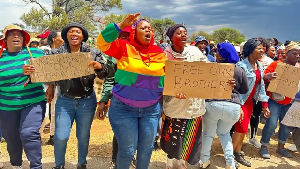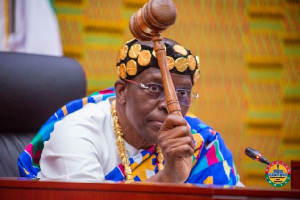The World Bank says Sub-Sahara African governments’ debt remains high and riskier but notes that some progress has been made in debt restructuring.
In its October 2024 Africa Pulse Report, the World Bank said over the past decades, external public and publicly guaranteed (PPG) debt in Sub-Saharan Africa has been increasing, and it has more than quadrupled since 2006.
In 2022, the total external PPG debt reached US$462 billion, compared to US$108 billion in 2006.
Rising external debt mirrors the changes in the composition of external debt creditors.
Multilateral financing has increased over a protracted period among LICs in the region.
Their share of multilateral financing in PPG external debt has increased since 2015 and has remained above 50 percent since 2019.
Overall, the share of multilateral debt in external PPG debt for LICs increased by 12 percentage points between 2015 and 2022 and only 5 percentage points for middle-income countries (MICs) over the same period.
The share of external financing from the bilateral Paris Club creditors decreased in Sub-Saharan Africa, while the share from bilateral non–Paris Club creditors increased slightly, the report said.
In 2006, bilateral Paris Club creditors accounted for 22 per cent of external debt in Sub-Saharan African countries, which decreased to 5 per cent by 2022.
In contrast, the share of bilateral non–Paris Club creditors increased from 15 to 16 per cent during the same period.
On the back of the changing creditor landscape is a significant concentration of holdings by a few major creditors.
Before the global financial crisis, Sub-Saharan Africa’s top six bilateral creditors were France, China, the United States, Japan, Saudi Arabia, and Kuwait.
However, by the end of 2022, the creditor composition changed, with China—a non–Paris Club member—leading as the most significant official bilateral creditor to SSA, with its debt stock increasing from 3 per cent in 2006 to 12 per cent in 2022.
The debt burden increased as countries resorted more to market financing.
Bond financing has increased as a source for Sub-Saharan African MICs’ external PPG debt, leveraging their access to capital markets.
The share of bonds in the total external PPG debt of MICs increased by 13 percentage points between 2006 and 2022.
Since 2007, 17 countries in the region have issued Eurobonds to private creditors. After a two-year hiatus from international markets, four countries (Benin, Côte d’Ivoire, Kenya, and Senegal) resumed issuance of sovereign bonds in early 2024, with some of these issuances to buy back and refinance Eurobonds and commercial loans falling due.
However, the issuance came at a higher price tag as a result of higher global interest rates rather than bigger country risk spreads.
For instance, the coupon of the new Eurobond issued by Kenya in February is 9.75 per cent, compared to the 6.875 per cent for the Eurobond maturing in 2024.
Eurobond redemptions remain high in 2024 and are expected to increase in 2025.
In 2024, eight countries in Sub-Saharan Africa are expected to amortise their sovereign bonds with a cumulative value of US$4.5 billion.
Three countries in AFE had the largest sovereign bond redemptions, with a total share of 90 per cent of the bonds issued in 2014— namely, Kenya (US$2 billion), Ethiopia (US$1 billion), and Zambia (US$1 billion).
The region will continue its high bond redemptions in 2025, with a cumulative bond capitalisation of US$5.2 billion.
Angola and Nigeria account for more than 50 per cent of the redemptions.
Overall, bond redemptions are projected to increase steeply in the region in 2024–25, reflecting redemptions of Eurobonds, before decreasing in 2026.
The higher redemptions in 2024 and 2025 are expected to drive up governments’ financing needs, in the context of higher market rates, as they potentially account for a significant proportion of government revenues in some Sub-Saharan African countries.
The restructuring of external debt in Ethiopia, Ghana, and Zambia is expected to result in lower payments as bond exchanges are finalised.
Greater reliance on domestic bonds amid restricted access to global capital markets.
In parallel, Sub-Saharan African countries have increased their reliance on domestic debt markets, whose continued development enabled countries to finance larger deficits despite the low tax base in the region.
Based on the World Bank-IMF LIC Debt Sustainability Framework (DSF) database, the median public domestic debt-to-GDP in Sub-Saharan African countries increased from 8 per cent in 2012 to 22 per cent in 2022.
From 2012 to 2021, public domestic debt-to-GDP in LICs rose by around 15 percentage points to 23 per cent, while for lower-middle-income countries (LMICs) it increased by 10 percentage points and reached 19 per cent in 2021.
The COVID-19 pandemic accelerated the accumulation of public domestic debt at a much faster pace given countries’ need for greater financial resources to protect people and jobs.
However, since 2023, the median public domestic debt-to-GDP among countries in Sub-Saharan Africa using the LIC-DSF has stabilised, and it is projected to reach 20 per cent of GDP in LICs and 17 per cent of GDP in LMICs in 2024.
Government financing needs to remain high. Public gross financing needs (GFNs) are expected to remain higher than in the pre-pandemic era.
Financing needs for countries in Sub-Saharan Africa increased sharply after the COVID-19 pandemic until 2022, as countries ramped up resources to support economic recovery. The higher energy and food prices further amplified government financing needs.
For LICs in Sub-Saharan Africa, the average GFN was almost 13 per cent of GDP by the end of 2022, with 11 countries (Benin, Burundi, The Gambia, Ghana, Mozambique, Rwanda, São Tomé and Príncipe, Sierra Leone, South Sudan, Togo, and Zambia) having GFNs exceeding 14 per cent of GDP, a level consistent with a higher probability of distress in countries using the LIC-DSF.
GFNs in LICs in Sub-Saharan Africa decreased to an average of 10 per cent in 2023, and this is projected to be broadly stable in 2024 as government finance pressure eases and primary deficits taper.
Government debt is stabilising at high levels. Public debt in Sub-Saharan Africa was four times higher in 2023 compared to 2006, reflecting external and domestic debt stabilising at elevated levels and high GFNs.
The average nominal level of debt in 2006–19 was around US$565 billion, and the current nominal public debt at end-2023 stood at US$1.25 trillion.
It is expected to drop slightly to US$1.18 trillion at end-2024.
Since 2013, accommodative global financial conditions and a search for yield have facilitated larger volumes of financing to countries in Sub-Saharan Africa.
Furthermore, the collapse in oil prices in 2014–16 led to exchange rate depreciations and wider primary deficits that pushed public debt upward.
During the pandemic and post-pandemic recovery period, debt levels increased to respond to higher financing needs.
However, the context has changed after the COVID-19 crisis, as persistent global inflation and tighter monetary policies have led to higher (domestic and external) borrowing costs for countries in Sub-Saharan Africa and put pressure on exchange rates.
The median total public debt-to-GDP in Sub-Saharan Africa increased from 37 per cent in 2006 to 52 per cent in 2019, before the COVID-19 shock, and further increased to 57 per cent in 2023.
In 2023, the median debt-to-GDP ratio for LICs in Sub-Saharan Africa reached 57 per cent, while it reached 64 per cent for MICs.
The debt burden remains high. Sub-Saharan Africa’s total debt service levels have increased steadily since 2006, adversely affecting fiscal space and increasing vulnerability to shocks, especially for countries that have gained access to the international bond market and other non-concessional financing sources.
Total annual debt service increased by US$31 billion between 2006 and 2022.
Additionally, the expiration of the Debt Service Suspension Initiative—which suspended and rescheduled debt service due during 2020–21—along with high global interest rates led to a large increase in debt service in 2023, amounting to US$51 billion, resulting in a total cumulative increase of US$82 billion.
The highest increase was in AFE countries, where total debt service in 2006–22 increased by US$81 billion.
The ratios of total debt service to exports and debt service to revenue in Sub-Saharan Africa are 32 and 49 per cent, respectively, for 2023, and are estimated to adjust downward in 2024 to 22 and 34 per cent, respectively.
As a result, external debt distress risks in Sub-Saharan Africa have increased since 2015.
The risk of external debt distress in the region has surged as the share of countries at high risk of or in debt distress in the LIC-DSF increased from 27 per cent in 2015 to 53 per cent in 2024.
2021, no country in Sub-Saharan Africa has been classified as low risk, and the share of countries at high risk or in debt distress reached a peak of 61 per cent in 2021.
Recently, the risk of debt distress has improved in a few countries due to debt relief.
During 2023, Mauritania and Somalia’s risk of debt distress improved to “moderate,” from “high” and “in debt distress,” respectively.
In contrast, Ghana was downgraded to “in debt distress” in May 2023 in the context of the ongoing debt restructuring.
To restore debt sustainability and rebuild fiscal space, several countries in Sub-Saharan Africa are implementing comprehensive debt restructurings in the context of the Common Framework and beyond.
Chad, Ethiopia, Ghana, and Zambia have applied for external debt treatments under the Common Framework.
Restructuring agreements were reached with official bilateral creditors in all the countries except Ethiopia, where negotiations were delayed due to the country’s internal conflict.
Negotiations with official and private creditors continue, with a few countries reaching an agreement.
Chad reached an agreement with all its main creditors in November 2022.
The Government of Zambia agreed on a state-contingent debt treatment with its official creditors in October 2023 and concluded a bond exchange in June 2024.
Negotiations with other private creditors are being finalized.
The Government of Ghana also concluded negotiations with its official creditors in June 2024 and has reached a preliminary deal with bondholders.
Progress on debt restructuring negotiations in these countries allowed the IMF to conclude financing programmes and the World Bank to provide large positive net flows at highly concessional or grant terms.
Beyond the Common Framework, Malawi outlined a strategy to restructure its external debt and restore debt sustainability in July 2022.
The authorities are negotiating with commercial and official bilateral creditors and have recently reached an agreement with China—a major bilateral creditor—for a restructured amount of US$206 million (1.6 per cent of 2023 GDP) to reduce the country’s debt service needs.
In December 2023, Somalia received a US$4.5 billion debt relief package from its creditors, including the World Bank, as a result of the country’s Completion Point under the Enhanced Heavily Indebted Poor Countries Initiative.
The debt relief package aims to support the country’s economic recovery and ensure debt sustainability.
Watch the latest edition of BizTech below:
Ghana’s leading digital news platform, GhanaWeb, in conjunction with the Korle-Bu Teaching Hospital, is embarking on an aggressive campaign which is geared towards ensuring that parliament passes comprehensive legislation to guide organ harvesting, organ donation, and organ transplantation in the country.
Click here to follow the GhanaWeb Business WhatsApp channel
Business News of Tuesday, 15 October 2024
Source: classfmonline.com

















